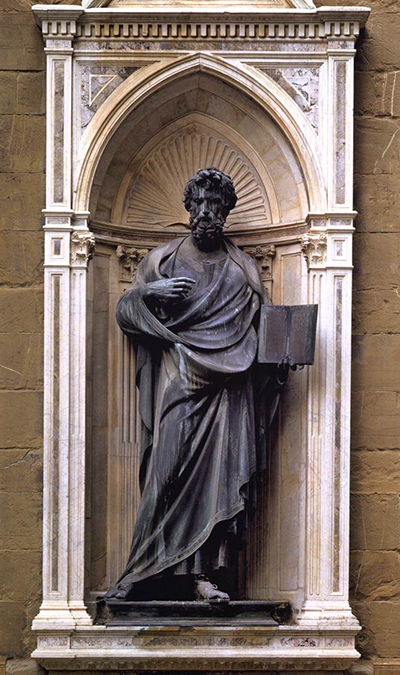St Matthew is one of several bronze sculptures completed by Lorenzo Ghiberti for the Orsanmichele in Florence.
They are all approximately the same height in order to match the consistency of the external niches on this building. The statues have now been moved indoors in order to preserve them for centuries to come.
The sculpture was commissioned in 1419 and was completed around four years after that. The sculptor was in high demand at that time and would typically be working on several projects at the same time. His initial series of bronze doors, also produced in Florence, raised his profile considerably and left him with no choice but to strengthen and expand his studio.
The full complement of fourteen patron saints were put together by a selection of some of the finest sculptors ever to have graced Italy. The republic of Florence had great wealth at this time and, as such, had no problem in attracting the finest artists and financing their requirements.
Despite producing several statues to adorn the same external walls, it would be wrong to assume that each is in the same style as each other. St Matthew is of the new classical style where as St John has more gothic attributes. The early Renaissance was all about development, experimentation and a fusion of new ideas with the artistic principles of the past. Ghiberti used his studio to draw on new influences, with a number of high profile names passing through his tutorship.
St Matthew is depicted with his weight more on one side which is purposely done by Ghiberti in order to give a suggestion of movement. Whilst at first glance these outer statues would look particularly consistent, on closer inspection there is variation in style, use of symbolism and pose.




